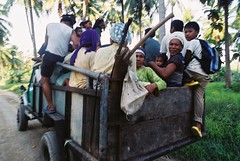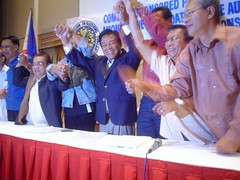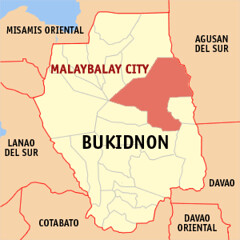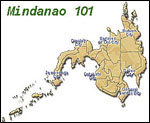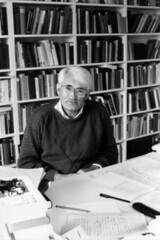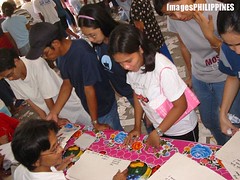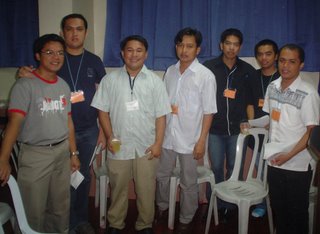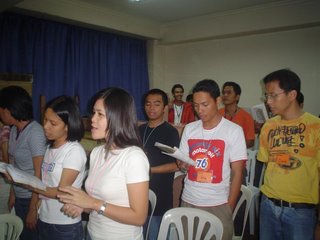By Walter I. Balane / MindaNews
(Note: Story courtesy of MindaNews news service and is not yet available at www.mindanews.com as as of 9:29 p.m. of June 22, 2006.)
DAVAO CITY (MindaNews/22 June) -- The new United States ambassador to the Philippines denied that her country is directly involved in the government's all-out war against the New People's Army (NPA).
"We are not involved in specific tactics. Our assistance is focused on
the long range and broad-based campaign against terror," Ambassador
Kristie A. Kenney told reporters today on her first visit here.
Kenney said they leave it to the Philippines to decide on how to
conduct the campaign.
She said assistance given on hardware and the sending of military
advisers is part of a broader campaign not directed to any specific
group.
"Each country has its specific tactics. We are looking at the big
picture," she said.
The ambassador said their role in the Philippine government's
counter-insurgency campaign is just in the training of military and
police personnel. But she said that the same is part of many efforts
like the drive against trafficking of persons and anti-corruption in
government.
"Our over-all concern is the protection of our citizens," she said.
In 2002, the US put the NPA on its list of "foreign terrorist
organizations" for the group, according to the US State Department,
"strongly opposed any US presence in the Philippines and has killed US
citizens there. The group has also killed, injured, or kidnapped
numerous Philippine citizens, including government officials."
On June 16, President Gloria Macapagal-Arroyo ordered the Department
of Budget and Management to release P2 billion additional fund to
equip the Armed Forces of the Philippines and the Philippine National
Police in an all-out war against the NPA.
Arroyo issued statements to "crash the NPA in two years." But the
National Democratic Front has belittled the two-year "end game" plan
as a "costly and deadly misadventure."
Kenney, who has been top US diplomat to the Philippines since March 6,
replaced Francis Ricciardone, who was ambassador to the Philippines
and Palau.
Kenney is in town to visit US-sponsored programs in Davao City and for
some speaking engagements. She met with local government and business
leaders and members of the Bishops-Ulama Conference. She also signed a
$179,000 grant to the Visayan Forum Foundation to help expand halfway
house operations for victims of human trafficking.
She announced a $21-million grant through the US Agency for
International Development to fight corruption in the Philippines over
the next two years but said they are still deciding on how it will be
implemented. She also announced a $20-million fund for agriculture
assistance.
According to the website www.us-asean.org/Philippines, Kenney is a
senior member of the US Foreign Service. She served as ambassador to
the Republic of Ecuador from September 2002 to July 2005.
Beginning in 1998, she served as executive secretary of the State
Department for three years, the first woman to hold that key position.
Kenney's overseas postings include economic counselor at the United
States Mission to International Organizations in Geneva, economic
officer at the US Embassy in Argentina, and consular officer at the US
Embassy in Jamaica.
She holds a master's degree in Latin American studies from Tulane
University, and a bachelor's degree in political science from Clemson
University. She also attended the National War College. (Walter I.
Balane/MindaNews)
(Photo taken from the webpage: http://www.philippinerevolution.org/gallery/hfoto.shtml)


